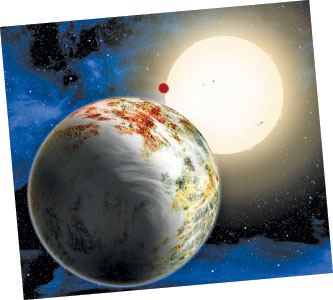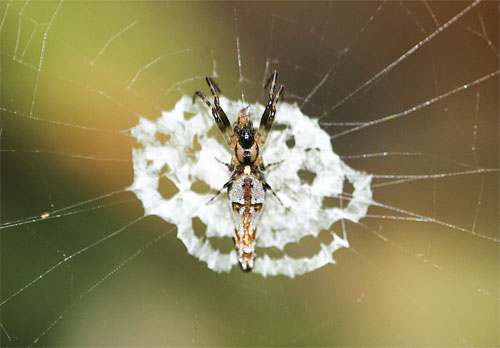|

This ultimate selfie will make you dizzy!
 Extreme selfies have become a recent trend, with the most popular
being taken from dizzying heights. Travel company owner Lee Thompson is
the most recent person to take a newsworthy extreme selfie; he snapped
his from atop the 124-foot high Christ the Redeemer statue in Rio de
Janeiro, Brazil. Extreme selfies have become a recent trend, with the most popular
being taken from dizzying heights. Travel company owner Lee Thompson is
the most recent person to take a newsworthy extreme selfie; he snapped
his from atop the 124-foot high Christ the Redeemer statue in Rio de
Janeiro, Brazil.
The statue of Jesus Christ was completed in 1931 and sits on top of
700-metre (2,300 foot) Corcovado mountain overlooking the city of Rio.
It is not only a religious symbol for Brazilian Christians, but is also
a very popular tourist attraction.
Thompson didn't climb the statue illegally - he got permission from
the tourist board of Brazil and was helped by guides.
It took 25 minutes climbing up "extremely hot, eerily quiet and
claustrophobic" stairwells, but the view from the top was worth it.
"When I popped my head out of the top it took my breath away. The
view really was incredible. It is the most fun selfie I've taken and one
of my favourite photos," Thompson said. GoGo News-Internet
'Mega-Earth' rocky planet discovered
 A massive planet that has been nicknamed 'Mega -Earth' has been
discovered 560 light years away from Earth. The planet, Kepler-10 c,
weighs 17 times more than Earth, which surprised astronomers who
expected it to be a big ball of gas, like Jupiter. A massive planet that has been nicknamed 'Mega -Earth' has been
discovered 560 light years away from Earth. The planet, Kepler-10 c,
weighs 17 times more than Earth, which surprised astronomers who
expected it to be a big ball of gas, like Jupiter.
It's been nicknamed Mega-Earth because it is much larger than other
rocky bodies that have been discovered in space. It also circles a
Sun-like star, but it does so every 45 days instead of the 365 days it
takes Earth to circle the Sun.
"This is the godzilla of Earths! But unlike the movie monster,
Kepler-10c has positive implications for life," said Dimitar Sasselov,
director of the Origins of Life Initiative at Harvard University.
Kepler-10c tells scientists two key things: Rocky planets could form
much earlier than believed, and it may host life. According to
astronomers' calculations, Kepler-10c is about 11 billion years old,
only 3 billion years younger than our universe!
"Finding Kepler-10c tells us that rocky planets could form much
earlier than we thought," said Sasselov. "And if you can make rocks, you
can make life," he said. GoGo News-Internet
This spider disguises itself as bird poop!
 There are some pretty clever spiders out there, like the
decoy-building spider of South America that uses small rocks and pieces
of dirt to build a large spider in its web to confuse its predators. The
orb-web spider (Cyclosa ginaga) camouflages itself as something a little
less beautiful: bird poop. There are some pretty clever spiders out there, like the
decoy-building spider of South America that uses small rocks and pieces
of dirt to build a large spider in its web to confuse its predators. The
orb-web spider (Cyclosa ginaga) camouflages itself as something a little
less beautiful: bird poop.
It weaves a silky round decoration in the centre of its web that
looks very similar to a dropping of white bird poop. Scientists believe
the spiders do this to disguise themselves from hungry wasps looking for
meal.
"These predators usually will form a search image to hunt for
spiders, and [they] usually will not be interested in bird droppings,"
said I-Min Tso, the lead researcher behind the study of this spider. To
test whether or not their bird-poop disguise was actually effective,
scientists measured the colour contrast between the spider's body, its
poop look-a-like web, and actual bird droppings against a natural
background.
The results shower that the spider bodies perfectly blend in with
their white web, making them just like real bird poop (which is dark in
the middle and white on the edges) to a wasp.
The wasps were more likely to attack a spider when only its white web
was blackened, which suggests that the spiders rely on their body and
not just the silky web to complete the life-saving disguise.
GoGo News-Internet
|

